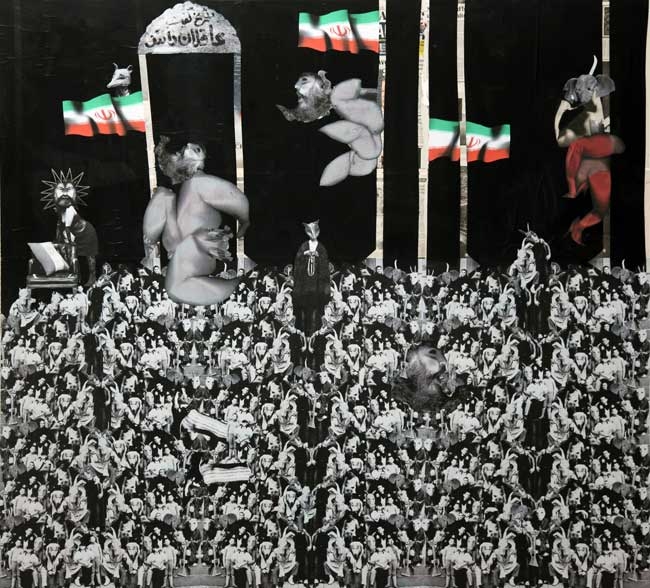This large scale painting is inhabited by strange characters borrowed from an Iranian musical fable. Created in1967, first as an avant-garde play, then as a popular series, Shar-e-Ghesseh or “The City of Tales” perpetuates the Persian tradition of the allegorical tale. It is the story of an elephant with a broken tusk, who is both “helped” and disfigured by the village community. With his tusk fastened to his face and his trump cut off, he has to present himself to the authorities under the new name of Manouchehr. This deals with falsification, altered identity and the weight of social conventions.
The organisation of the images evokes the vertical and structured space of Persian miniatures. The lower part abound with archive photographs of the Bijan Mofid company, with actors wearing papier-mâché masks. An erudite mullah with a fox head is settled at the centre of the image. In the upper part, naked bodies are wriggling around porticos and poles holding the flag of the Islamic Republic. The artist paints these lascivious and monstrous self-portraits by scanning, then assembling fragments of his body: face, elbow, and thigh. He also represents himself as a pin-up girl wearing the sun as a headdress, an impious avatar of the god Mithra.
A witness of the blatant hypocritical amnesia of the political regime since 1979, Ramin Haerizadeh invents a painting of satirical and outrageous history(ies). As a univocal reaction to the official discourse, he opposes his hybrid and impure practice, between photography and painting. He counteracts the schizophrenic identity through extraction and disruption. He offsets the temptation of historical reconstruction by means of assembling and editing.
Irene Burkel
Translated by Valérie Vivancos


Follow us on: